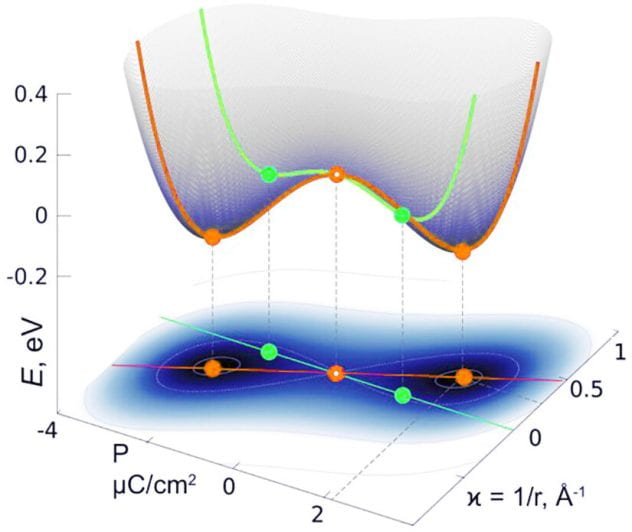Rice University scientists find new workable feature of a class of 2D materials
 Rice University materials scientist Boris Yakobson and collaborators uncovered a property of ferroelectric 2D materials that could be exploited as a feature in future devices.
Rice University materials scientist Boris Yakobson and collaborators uncovered a property of ferroelectric 2D materials that could be exploited as a feature in future devices.
Because they bend in response to an electrical stimulus, single-layer ferroelectric materials can be controlled to act as a nanoscale switch or even a motor, according to the study published in ACS Nano.
Polarization drives the larger atoms to one side of the 2D-material layer and the smaller atoms to the other side. This asymmetrical distribution of the atoms or ions causes the material surface to bend in ferroelectric state.
The study looked at 2D indium phosphide (InP) as a representative of the class of ferroelectrics for which it predicts this property.
“This new property or flexing behavior has to be tested in a laboratory for specific substances,” Yakobson said. “Its most likely use will be as a type of switch. This behavior is very fast, very sensitive, which means that with a very tiny local signal you can maybe switch on a turbine or electrical engine, or control adaptive-optics telescopes’ mirrors. That’s basically the essence of these actuators.”
– See more at Rice News

